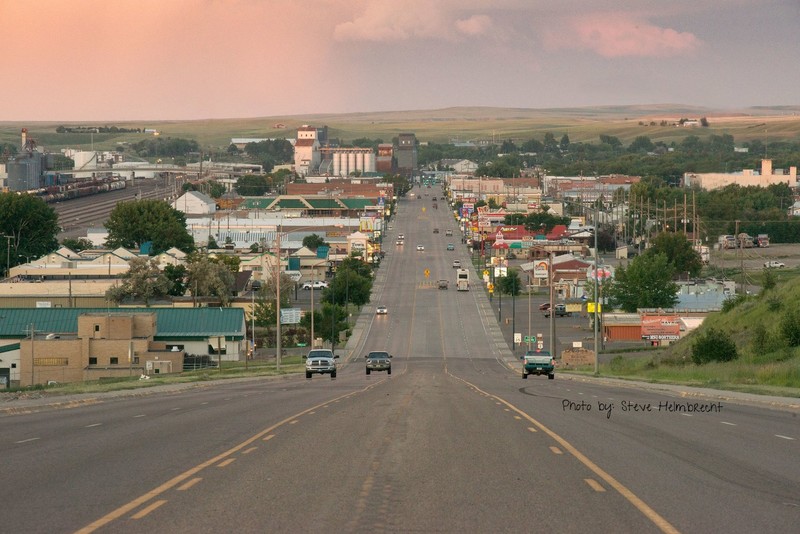Havre
Introduction
Text-to-speech Audio
Havre was first known as Bullhook Bottoms. When the Great Northern Railway was slated to stop here, its founder, James J. Hill, asked the the town’s founding fathers to select a new name. Unfortunately, the first meeting ended in a brawl. At a subsequent meeting, Gus Descelles, an original homesteader, suggested it be named after his parents’ hometown of Havre, France. Havre quickly became the transportation hub of the area, providing goods and supplies to the area trappers, miners and military stationed at Fort Assinniboine, six miles southwest of town. Prior to 1910, the area was devoted primarily to raising sheep, cattle and horses. Soon, the number of farms began to outpace the number of ranches, as farmers started growing some of the world’s greatest spring and winter wheat. Although agriculture is the undisputed financial mainstay in the area, the economy is diversified with farming, ranching, hospital and health services, education, professional and retail business, manufacturing, and railroad industries. Havre is the focal point of commercial activity in the area. As the largest city on the Hi-Line, it serves as a wholesale distribution and retail center for communities within 150 miles. Havre is the county seat of Hill County.
Images
Havre - Cityscape

Backstory and Context
Text-to-speech Audio
As we pass through Havre, I want to provide you with a brief history of the area. Following the Great Sioux War of 18 77, the U.S. Military erected forts in the Northern Plains for protection, including Fort Assiniboine in 1879 near Montana's Milk River. This led to the formation of Bull Hook Bottoms, later Havre. The town expanded with the arrival of James J. Hill’s Great Northern Railroad in 1890, fostering settlement along Montana’s Hi-line. The African American 10th Cavalry was stationed at Fort Assiniboine until the Spanish-American War in 1898, contributing to the formation of a small African American community in Havre. The presence of African American soldiers and job opportunities from the railroad spurred the growth of this community, which established an African Methodist Episcopal church, a social hub. In 1910, most of Havre's 31 African Americans worked for the railroad or in service industries; only Alice Pleasant owned her business, the Home Café. By 1930, while Havre's overall black population remained at 35, many families had left due to out-migration trends triggered by events like the 1917 drought and exacerbated by World War I and the Great Depression. Residents, including African Americans, sought opportunities in California and Washington.
Sources
Havre. (n.d.). https://mhs.mt.gov/Shpo/AfricanAmericans/Places/PropertyRecords/Havre
https://www.ci.havre.mt.us/financecity-clerk
